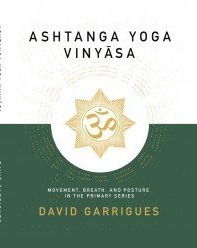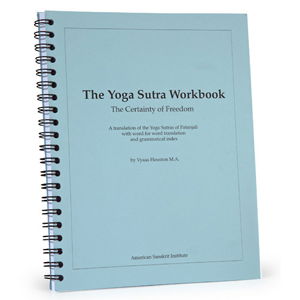Ashtanga Yoga Shala OKC
Class Schedule
Fees
Class Descriptions
Ashtanga Vinyasa- 60min All-levels class. includes breakdown of postures, which are taught in a progressive sequence and chosen from the Ashtanga Yoga Series with an emphasis on breathing techniques.
Instructed Primary Series- 90min. All-levels, in-depth teaching of the Primary Series and yogic breathing practices.
Tips and Info to Know
Payment:
For private and semi-private Ashtanga classes, please contact Katie directly.
____________________
Classes:
Katie will work with you to develop an at home practice to work on independently in between private and semi-private sessions
____________________
Facility:
Private and semi-private sessions are variable depending on group and location.
AYSOKC is not responsible for storing your belongings or lost or stolen property. Please practice cleanliness and mindfulness by taking your mats, towels, and other belongings home with you each day.
Class Etiquette
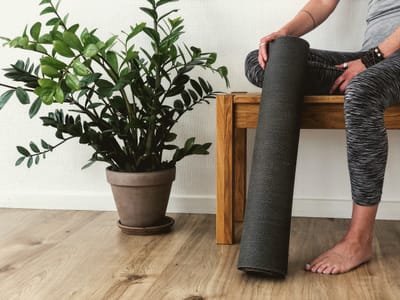
- Roll out your mat in line with the others in the room, and square to the room shape. This not only keeps things feeling orderly, it also will help you and those around you stay balanced as you practice.
- If someone else is looking for space for their mat, and you have some, please offer it. People can be shy about asking. If you must walk about during class, please do not step on other people’s mats.
- Make sure that your body, your clothes and your mat are clean and odor free. It is traditional to bathe before and after class. Mats and carpets need to be taken home and washed on an extremely regular basis.
- Wear clothing that is comfortable, you can move freely in, stays in place when bending over or attempting to touch your toes, and you are okay with sweating in. No shoes or socks are worn during practice, so you can feel and learn how to ground.
- Refrain from eating for a minimum of 3 to 4 hours before practicing.
- Please do not wear any perfume, cologne, after shave, or scented antiperspirant, shampoos, or conditioners. Just like natural body odors, these artificial odors will be intensified by the heat of the practice. Some students who come to the studio are very sensitive to chemicals. Please help them. This includes all “natural” or “organic” scents as well.
- All props are to be returned to their original places arranged with proper attention and neatness.
- Maintain basic, easy silence inside the yoga room before, during, & after practice times (except when interacting with the teacher about matters relevant to your practice).
- Stick to the variation you are working on and the cues you have been given and refrain from comparing yourself to what others are doing. Trust yourself, turn & tune into your own body and practice.
- A changing area and shower are available. If you want to use the shower, you will need to bring your own towel and toiletries. Please help keep these areas clean and orderly by taking home your belongings (mat, towel, toiletries, water bottle, etc).
- Cubbies are available to store your belongings. Please refrain from storing your belongings in other areas of the studio, for example, next to your mat or at the walls.
- Plan to sweat! It could be beneficial to bring a sufficient size, clean towel each day.
About Our Teacher
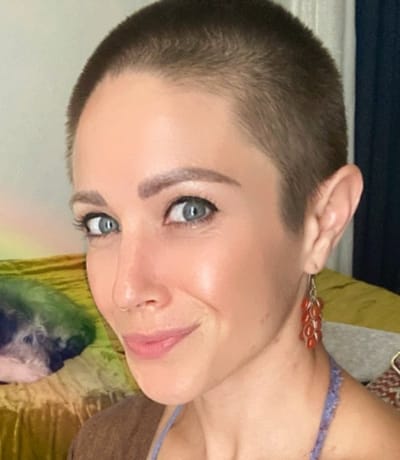
In 2016, she met who she considers to be her most impactful teacher, David Garrigues. David is one of the few teachers in the US certified to teach Ashtanga yoga by the late, world renowned master Sri K Pattabi Jois. Katie continued to study and travel to learn with David in weekend workshops, weeklong intensives, and spent three consecutive years studying at his Ashtanga Yoga School of Mysore in Kovalam, India. She is honored and grateful to have had the opportunity to apprentice for him during two of those years.
Always a student, she continuously surrenders to the practice, steady, passionate and without attachment. She hopes to inspire her community and students to learn, heal, and embody their highest form of Self, and believes that within each of us lies our greatest teacher. She is loyally and lovingly dedicated to upholding the Ashtanga yoga lineage in her own passionate, intense, yet balanced expression.
Tradition & Lineage
Many records (in the form of sacred texts) of the past teachings have been preserved and handed down in a long chain between teacher and student. These texts and teachings form the basis of a great tradition of yoga study that spans from the past to now. Within the yoga tradition there has always been great fluidity in the study and practice of the techniques. Teachers and students draw upon knowledge from multiple sources. They borrow techniques and synthesize philosophies to arrive at their methods of practice. Through the course of time, different teachers have founded schools, communities have sprung up around these teachers and they practice the techniques or view the nature of yoga in specific ways. As strong teachers come and go, schools, techniques, ways of thinking and practicing change, grow and evolve. An amazing intertwining of knowledge and methodology takes place, a melding of ideas, philosophies, and practices. The complexity of the weave of this yoga study makes it virtually impossible to come to an exhaustive or authoritative genealogy of yoga, and the further back you go the more obscure and untraceable the roots become. However certain texts from great, distant past have stood the test of time, the knowledge they offer has retained relevance and forms the basis of today’s study of yoga. These texts include the Upanishads, Tantra’s, stories from the great epics The Mahabharata and The Ramayana, Patanjali’s Yoga Sutra’s, The Shiva Samhita, Gheranda Samhita, Hatha Yoga Pradipika, Yoga Rahasya, Yoga Yajnavalkya and others.
The study of ashtanga yoga emerged from the legacy of the tradition of yoga study that utilized these texts as sources for creating effective yoga practices. The roots of ashtanga can be traced to the legendary, “Father of Modern Yoga”, T Krishnamacharya. He along with his student Sri K Pattabhi Jois brought forth the ashtanga method from material they found in an obscure, lost text known as the Yoga Korunta. They used this text in combination with knowledge from the sacred texts mentioned above to formulate the ashtanga system.Ashtanga incorporates many of the most classic and foundational of the hatha yoga techniques that are found in the more recent texts like the Hatha Yoga Pradipika (15th century). Ashtanga uses a concentrated synthesis of asana (Posture), Pranayama(breathing), Mudra’s (internal seals such as bandha’s), Dhyana (meditation), and Vinyasa (rhythm, sequence, uninterrupted flow) to create a complete practice that is suitable for the average “householder” to do on a daily basis.
David Garrigues teachings are devoted to honoring and furthering this same living lineage that began way back before recorded time with some unknown seeker whose intuition compelled him/her to quest after sacred knowledge. It is with the same spirit of love, intense curiosity, openness and conscious inquiry that David aims to help students dive into their own sadhana.
Writing provided by and honorably credited to David Garrigues
Photo: Sri T Krishnamacharya
David Garrigues is one of the few teachers in the US certified to teach Ashtanga yoga by the late, world renowned master Sri K Pattabhi Jois. Katie Kanak, owner of AYSOKC, studies under David Garrigues. She is a teacher and student of the ashtanga lineage. She shares her fire, passion, and integrity with students in hopes to empower them to continue developing and exploring their own practice.
8-Limbs
Ashtanga = 8-Limbed Path
Ashta= 8 . . . . . . . . Anga = Limb
The union of all eight limbs creates a holistic system and way of life. The eight limbs are outlined in the sacred text, Yoga Sutras of Patanjali.
1. Yama
Restraint, Discipline, Power to Say NO
Ahimsa- non-harming Satya- Truthfulness, virtuous Asteya- Non-stealing Bramacharya- Responsibly managing your sexual/creative energy Aparigraha- Non-possessiveness
2. Niyama
Observances, Power to Say YES
Saucha- Cleanliness of mind and body Santosa- Contentment, equanimity Tapas- Discipline, intense spiritual practice Svadhyaya- Self-inquiry, study of sacred texts Isvara-Pranidhana- Surrender or Dedication to Divine or Higher Power
3. Asana
Posture
This is the physical practice most commonly known in the West and characterized as Yoga.
4. Pranayama
Breath
Developing skill and relationship with breathing.
5. Pratyahara
Sense Withdrawal
Withdrawing your mind inward, refraining to act on external sensations. Residing in the immovable spot of your posture.
6. Dharana
Concentration
Holding or maintaining focused concentration
7. Dhyana
Meditation
Training the mind to withdraw and detach from the turnings of thought
8. Samadhi
Absorption
Divine Bliss, Oneness, Pure Consciousness, Dissolving of All Effort
Opening & Closing Prayers
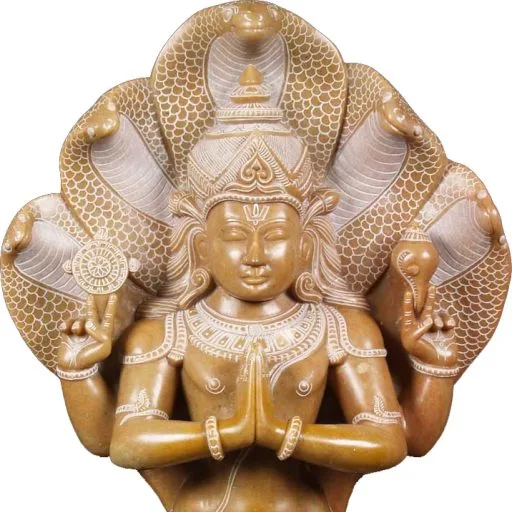
“Chanting and mantra recitation have accompanied yoga practice for thousands of years. Chanting is of course both the in-toning of the rich vibratory sounds and the simultaneous listening to them. The deep listening naturally suspends the normal movement of the discursive mind and allows contemplation of the patterns of sensation, emotion, and imagination.”
- Richard Freeman, world renowned teacher and practitioner of Ashtanga yoga lineage
~It is tradition for Ashtanga students to chant the Opening Prayer at the beginning of each practice & the Closing Prayer at the ending of each practice.~
-OPENING PRAYER-
Om
Vande gurunam caranaravinde
Sandarsita svatmasukhavabodhe
Nihsreyase jangalikayamane
Samsara halahala mohasantyai
Abahu purusakaram
Sankhacakrasi dharinam
Sahasra sirasam svetam
Pranamami Patanjalim
Om
Translation of Opening Prayer by, Katie Kanak
Om is the primordial sound of creation and vibration of the universe. It represents the cyclical process of nature and is from which everything in reality originates; it is a universal sound that connects us to oneness.
I respectfully bow to the teacher before me and within me, and the light and love which comes through and is at the heart of every being. This refers to the Ashtanga yoga practice, lovingly being passed down and preserved, and now it is here for me to experience. The practice is my teacher, the one who passed it down to me is my teacher, and I am my teacher.
I trust and surrender my ego to endure the teachings more deeply.
The knowledge of happiness is the goal of yoga. This practice helps to reveal and see the knowledge of my true-Self, which is the happiness of pure being. I see myself without judgement, and I am happy with my unique, true-Self.
This practice is like the jungle doctor, who can heal the physical and emotional Self and unconscious behaviors, and there is no other cure or healing that is equal to it.
This practice can bring relief and peaceful resolution to our conditioned existence and suffering.
*This second part is paying respects to Patanjali, an important figure in Hatha Yoga texts, who is depicted as half-serpent, half-man. The serpent is known as Ananta, meaning infinite.
All bodily limbs and in the form of a human.
Holding a conch- a shell representing divine sound, discus- a circle of light representing how yoga brings awareness to present moment, and sword- the ability to cut through delusion and confusion of our own minds.
1,000 brilliant white heads in reference to Patanjali, the serpent Ananta meaning infinite. This represents how we are all different, but one in the same; One reality, many paths.
We salute to Patanjali, bow, and give thanks. Surrendering to the practice and process, surrendering the ego to experience peace, happiness of pure being, and connection to what is infinite or beyond us.
-CLOSING PRAYER-
Om
Svastiprajabhyah paripalayantam
Nyayena margena mahim mahisah
Gobrahmanebhyah subhamastu nityam
Lokah samastah sukhinobhavantu
Om shanti shanti shantih
Translation of Closing Chant by, Katie Kanak
Om- connecting us to oneness.
The energy cultivated during practice is lovingly sent out to protect our Earth, ask the leaders of our Earth to walk a right and just path, and to wish all beings who realize its sacredness, a happy, healthy, prosperous, and free life.
Om- may we find peace in body, mind, and spirit (planetary, inner and cosmic)
This powerful, healing medicine is administered through small burns in the skin where it enters the lymphatic system. It stimulates the endocrine glands of the brain, which results in an immune effect and a deep cleanse of the physical & energetic bodies. It triggers a variety of beneficial chemical reactions in the human body, and has a unique ability to cross the blood brain barrier, producing its effects at the level of the brain.
As we know, disease is a physical manifestation of imbalance that originates in the subtler energetic bodies that are emotional, spiritual, and mental. When we get to the root of the issue, usually tracing all the way back to childhood, Kambo can work with us to release these imbalances and impurities, guiding us back to a state of balance. Kambo ultimately works at the deepest cellular level to wake up the body's natural ability to heal it itself and bring the person back to a state of harmony.
.
Polypeptides & Benefits
Kambo contains a wide range of bioactive polypeptides that offer an abundance of benefits including:
- perform hormone-like tasks=support vital cellular processes such as learning, memory, and metabolism of certain neurotransmitters
- effect gastrointestinal muscles, gastric and pancreatic secretions, blood circulation
- stimulates adrenal cortex, pituitary gland, and reproductive system
- analgesic/pain-relieving powers
- inhibit the growth of tumor cells
- antimicrobial, antifungal, antiviral, and antiprotozoal
Additional Potential Benefits:
healing emotional trauma, PTSD, anti-inflammatory, relieve joint pain, heal eyesight, treatment of Alzheimer's, Parkinson's, Lyme disease, depression, migraines, blood circulation problems, vascular insufficiency, organ diseases, skin and eye issues, cancer, fertility problems in women, AIDs, candida, hepatitis, herpes, and more
Different Ways to Sit with Kambo:
*Let's talk about which option is best for you and why!*
+Single session- sit once with the medicine
+Inoculation- sit with the medicine three times within one week
+Prior to plant medicine ceremony= Kambo goes in and clears everything out, so the plant medicine doesn't have to do as much clearing, it can go straight to the source for healing, and you get to receive the most benefits from your ceremony!
Katie is available to travel for retreats, groups, and private sessions.
P: (785) 979-8489
E: katiemariekanak@gmail.com
,
Katie received her training and licensure through CKPI, Certified Kambo Practitioners International, under Omar M'Rabet Gomez in 2023. She was initiated in the traditional way of the Matses, and continues to serve the medicine with honor, respect, and integrity to uphold the Matses tradition.
Her healing journey with Kambo began in 2016, when the opportunity to sit with the medicine presented itself at an Ayahuasca ceremony. During her first Kambo session, she heard a message that she was going to serve this medicine, & she carried this deep knowing with her through the years as she continued to heal and deepen her relationship with the Kambo. Kambo facilitated her healing from trauma, an eating disorder, & got her off ADHD medication. Kambo reminds her that we are all sovereign beings, and that everything we need is inside us.
In gratitude of her own experience and healing with this medicine, Katie is passionate about being a conduit for Kambo to help others heal from past traumas that have manifested into physical disease, emotional imbalance, and even addiction. During the time she's been serving Kambo, Katie has had the opportunity to witness others successfully get off anxiety, depression, and ADHD medications in addition to kicking caffeine, cigarettes, and alcohol. She has also had the honor of working with women, including herself, who have reported a healthier, less painful menstrual cycle after sitting with the medicine.



